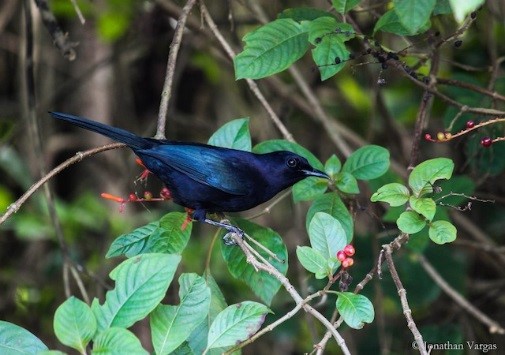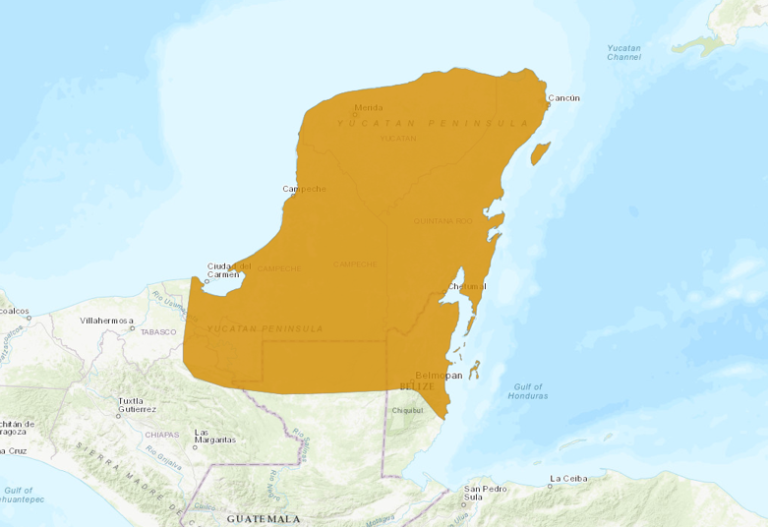Birdfinding.info ⇒ Common and easily found on Cozumel and along the Mayan Riviera, including Cancún and Tulum. Less common and more localized elsewhere. In Belize, reliable sites include Abmergris Caye, Caye Caulker, and the Corozal area. In Guatemala, it is found most often in the area south of Lake Petén-Itzá near the villages of Purucila and Santa Ana; infrequently at Tikal.
Black Catbird
Melanoptila glabrirostris
Endemic to the Yucatán Peninsula and adjacent islands, including Cozumel.
Occurs in scrubby woodlands nearly throughout the peninsula, southwest to the vicinity of Campeche (the city), south in the interior to the Petén region of Guatemala, and south along the Caribbean coast to southern Belize.
Sometimes wanders beyond its normal range: e.g., Roatán, Tabasco, and an extraordinary record from Brownsville, Texas (specimen, June 1892) that some authorities accept as valid and others reject.
Identification
All-black with glossy tones in strong light: violet on the head; indigo on the body; and pale blue or greenish on the wings and tail.
Potentially confused with several all-black icterids, but its shape and habits are typical of a mimid.

Black Catbird, in full gloss. (San Gervasio, Cozumel, Mexico; March 17, 2018.) © Jens Thalund

Black Catbird. (El Cedral, Cozumel, Mexico; December 17, 2018.) © Daniel Fitzgerald
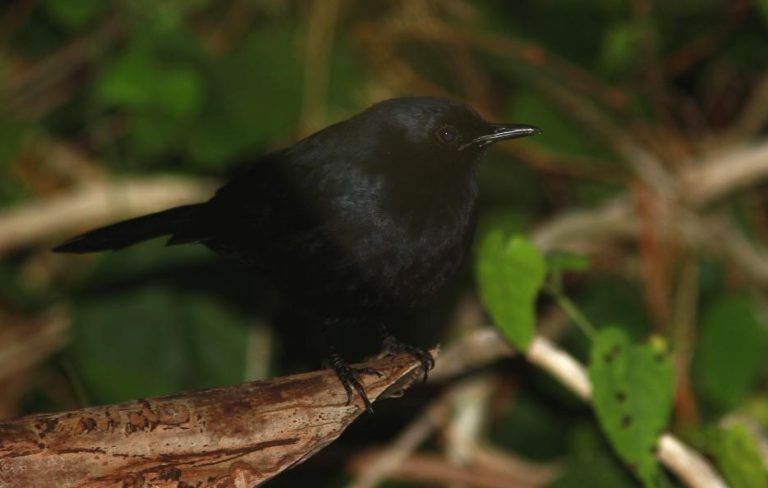
Black Catbird, coal-black in low light. (Akumal, Quintana Roo, Mexico; December 23, 2012.) © Guy Poisson

Black Catbird. (July 4, 2018; Santa Ana, Petén, Guatemala.) © Carlos Echeverría

Black Catbird. (Caye Caulker, Belize; January 17, 2019.) © Francis Canto, Jr.
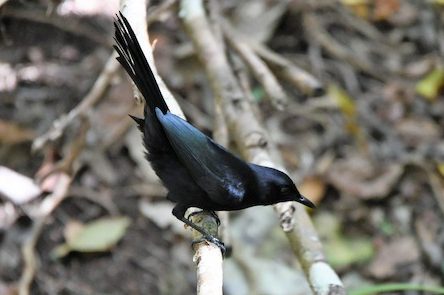
Black Catbird. (Cozumel, Mexico; March 27, 2018.) © Jerry Chen

Black Catbird. (Punta Norte, Cozumel, Mexico; July 3, 2018.) © Patrick VanThull

Black Catbird. (San José, Cozumel, Mexico; November 17, 2018.) © Cory Gregory
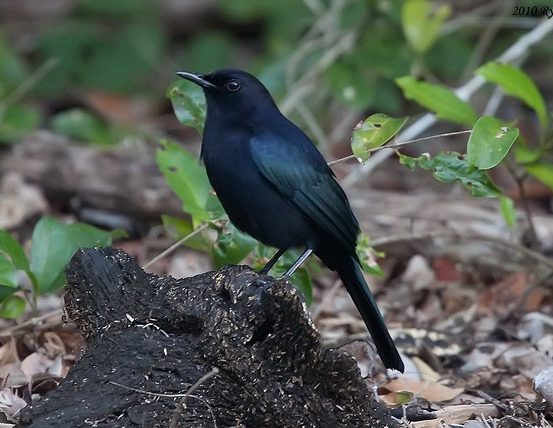
Black Catbird, showing a greenish gloss on the wings. (Cozumel, Mexico; January 3, 2010.) © Ryan Shaw

Black Catbird. (San Miguel, Cozumel, Mexico; December 5, 2017.) © Harpy Eagle

Black Catbird. (Ch’an Ka’an Planetarium, San Miguel, Cozumel, Mexico; April 24, 2019.) © Luis Trinchan
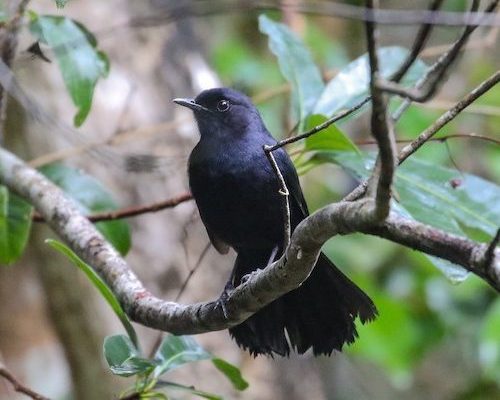
Black Catbird. (San Miguel, Cozumel, Quintana Roo, Mexico; April 1, 2018.) © Daniele Mitchell
Voice. Vocalizations are rich and various; often repeats the same phrase several times before moving on to another.
Songs consist of brief phrases of various qualities, including liquid whistles and a wide array of squeaky, scratchy, metallic, buzzy, or clicky sonic bursts: Calls are various and include harsh or metallic barks, whistles, meows, etc.:
Notes
Monotypic species.
IUCN Red List Status: Near Threatened.
References
BirdLife International. 2016. Melanoptila glabrirostris. The IUCN Red List of Threatened Species 2016: e.T22711017A94273184. http://dx.doi.org/10.2305/IUCN.UK.2016-3.RLTS.T22711017A94273184.en. (Accessed November 28, 2019.)
Brewer, D., and B.K. MacKay. 2001. Wrens, Dippers, and Thrashers. Yale University Press. New Haven.
Cody, M., and C.J. Sharpe. 2019. Black Catbird (Melanoptila glabrirostris). In Handbook of the Birds of the World Alive (J. del Hoyo, A. Elliott, J. Sargatal, D.A. Christie, and E. de Juana, eds.). Lynx Edicions, Barcelona. https://www.hbw.com/node/58178. (Accessed November 28, 2019.)
eBird. 2019. eBird: An online database of bird distribution and abundance. Cornell Lab of Ornithology, Ithaca, N.Y. http://www.ebird.org. (Accessed November 28, 2019.)
Howell, S.N.G., and S. Webb. 1995. A Guide to the Birds of Mexico and Northern Central America. Oxford University Press, Oxford.
Miller, M., J. DaCosta, J. Mortensen, M. Sorenson, R. Curry, and M. Reed. 2019. Next-generation phylogeny of Caribbean Thrashers. http://mj-miller.net/projects/post/thrashers. (Accessed November 28, 2019.)
